I first presented my argument challenging the claim that Brigham Young disbanded the Relief Society at the Mormon History Association conference in 2021. I further discussed the Shadow Succession Crisis at the Mormon History Association conference in 2022. This blog post focuses on what brought me to the research topic and introduces the themes of my research. I hope to publish a more detailed article soon. For more on this argument, you can hear me discuss the topic with Lindsay Hansen Park and Bryan Buchanan on the Sunstone Mormon History Podcast in a bonus episode that was released this week.
Did Brigham Young disband the Relief Society in 1845? I used to think so, but not anymore.
In March of 2020, a week or so before everything shut down due to COVID-19, my ward held a Relief Society birthday dinner with the theme of Utah women’s suffrage. We decorated the gym with poster-size illustrations of Utah women suffragists and activists illustrated by artist Brooke Smart for the Better Days 2020 campaign. I spoke at the event, giving some context for the resurgence of the Relief Society in Utah in the late 1860s and the Relief Society and Utah women’s involvement in the suffrage movement.[1] I repeated the claim I was then convinced of—Brigham Young disbanded the Relief Society in Nauvoo in 1845. I’d encountered the claim in several history books, news articles, and podcasts. I didn’t question the idea until a few months later.
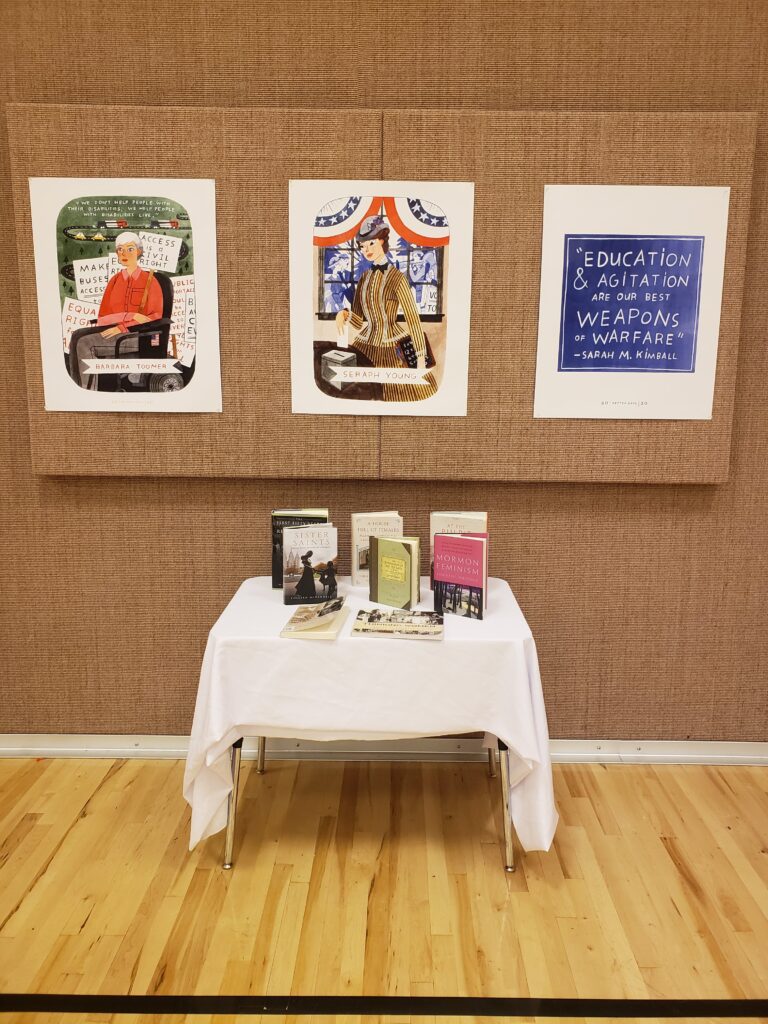
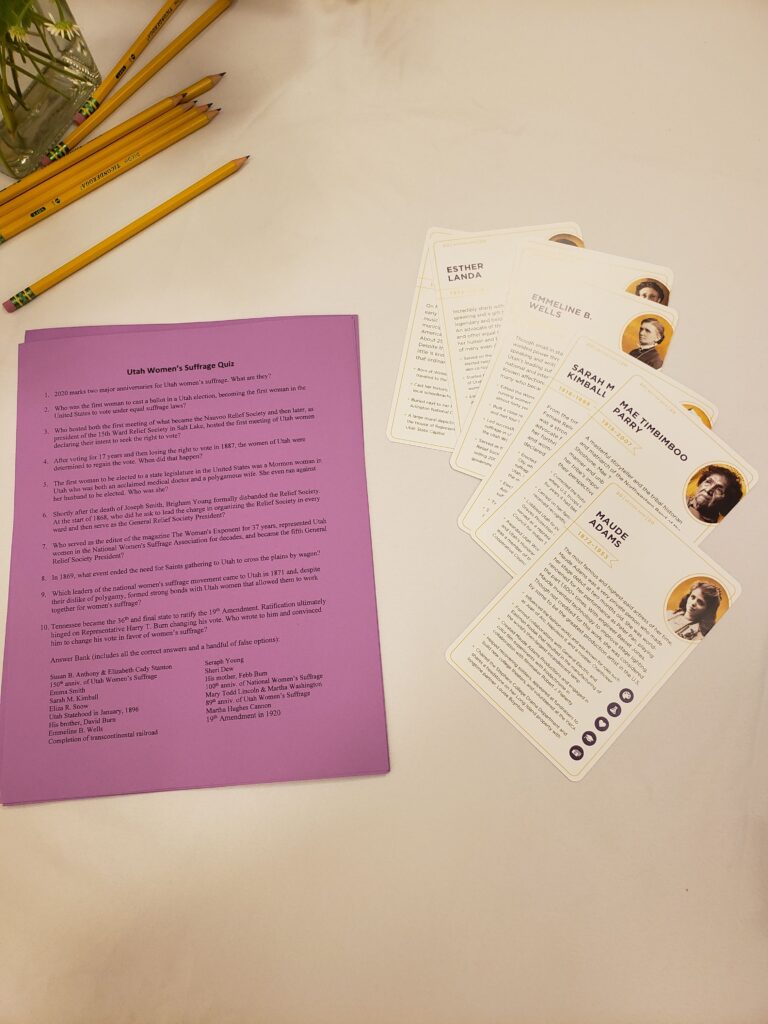
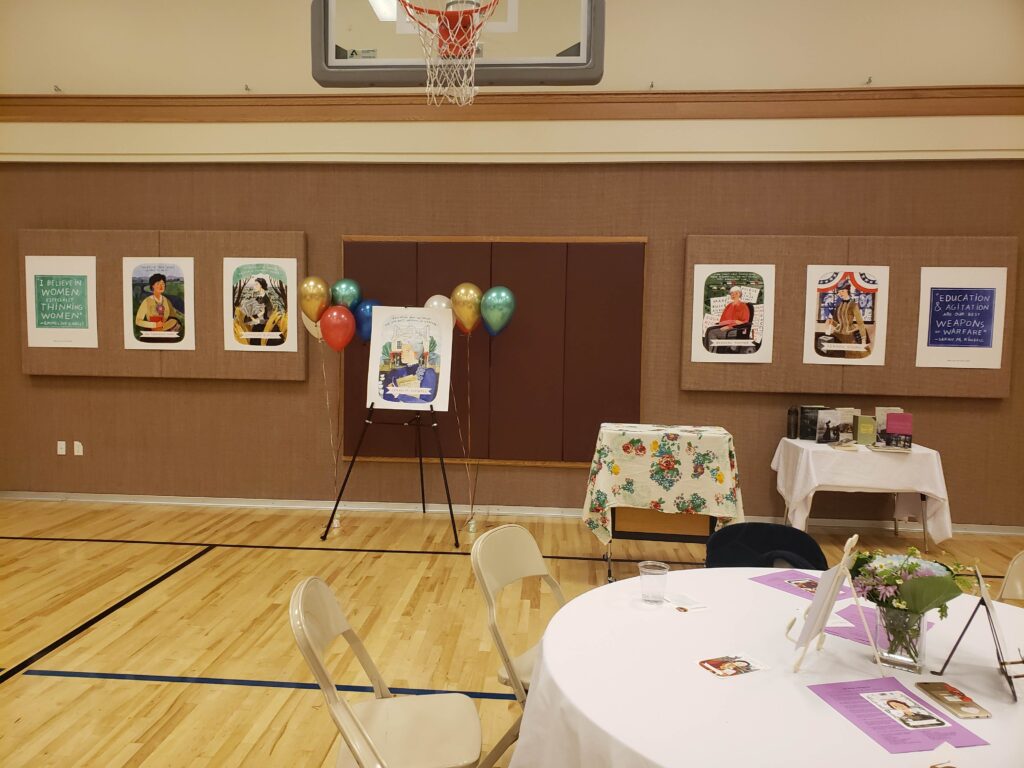
When I was suddenly thrown into pandemic homeschooling, I stopped all of my research and writing for a while. Eventually, I felt able to get back to work in the hours after my kids went to bed. For a project I was then researching, I read through a copy of the 1931 Handbook of the Relief Society. Section 1 of the book is a “Brief History of National Woman’s Relief Society.” It claims that the Relief Society is the “oldest woman’s organization in the United States that has continuously persisted” (15). I thought that was bold given that they were shut down in 1845. A bit later, it touched on the final meetings in Nauvoo: “[The March 9 and March 16, 1844] meetings were the last meetings held in Nauvoo, the work being interrupted on account of the martyrdom of the Prophet Joseph Smith and his brother Hyrum, which occurred June 27, 1844” (25). I thought it was odd that Brigham Young was not mentioned as the reason why the women stopped meeting. This handbook got me curious—where did the idea come from that Young disbanded the Relief Society? I began tracing the claim.
What I found was that it wasn’t until the mid-1980s that historians began claiming that Young disbanded the Relief Society. Earlier sources identified the conflicts in Nauvoo leading up to and after the martyrdoms as the reason the Relief Society paused in 1844. But as part of the growing body of professionalized Mormon history of the 1980s, scholars began grappling with the end of Relief Society meetings. Some scholars began interpreting Young’s words at a March 9, 1845 meeting with the Seventies as part of the larger context for the cessation of formal Relief Society meetings, and over time, scholars identified his words as the reason the women stopped meeting as an ecclesiastical organization.
So what did he say? On March 9, 1845, nine months after the murder of Joseph Smith, Young preached to an assembly of High Priests in the Masonic Hall and later that day to a meeting of a Seventies Quorum in the Seventies Hall. In both meetings, minutes record Young declaring his opposition to the Female Relief Society. To the Seventies he said, “When I want Sisters or the Wives of the members of this church to get up Relief Society I will summon them to my aid but until that time let them stay at home & if you see Females huddling together veto the concern.”[2] The High Priest minutes became available to researchers in 2010 and serve as a second source for Young’s attitude: “I say I will curse every man that lets his wife or daughters meet again—until I tell them—What are relief societies for? To relieve us of our best men—They relieved us of Joseph and Hyrum.”[3] With such deliciously incendiary language, it is no wonder that Young’s words became a popular source for the now nearly ubiquitous claim inside Mormon Studies that Brigham Young disbanded the Relief Society in Nauvoo.
But as I dug further, I found that there was no contemporary evidence that any of the women in Nauvoo heard what Young said in these all-male meetings or that they changed their actions accordingly. The final meetings of the Relief Society were held a full year before Young’s statements. When Emma called the women to order for what became the final four meetings of the Female Relief Society of Nauvoo in March of 1844, “correcting the morals” of the women and denouncing the “spiritual wife system” was the central focus of those meetings. Those meetings were likely uncomfortable as dozens of Relief Society women were already secretly plural wives to Joseph Smith or other men in Joseph’s inner circle. Emma ended the meetings saying they would meet again when an appropriate place could be secured, but they never did meet again.[4] Conditions in Nauvoo became increasingly complicated in the three months leading up to the murders of Joseph and Hyrum at Carthage Jail; Joseph’s death left Emma a pregnant widow with four children to care for and her family finances intertwined with church finances.
There is no record suggesting that Emma or any of her counselors attempted to call another meeting of the Relief Society in Nauvoo. After March of 1844, they ceased to meet as an ecclesiastical society, though women carried on much of the work that the Relief Society set out to do with caring for the poor and aiding in building the temple.

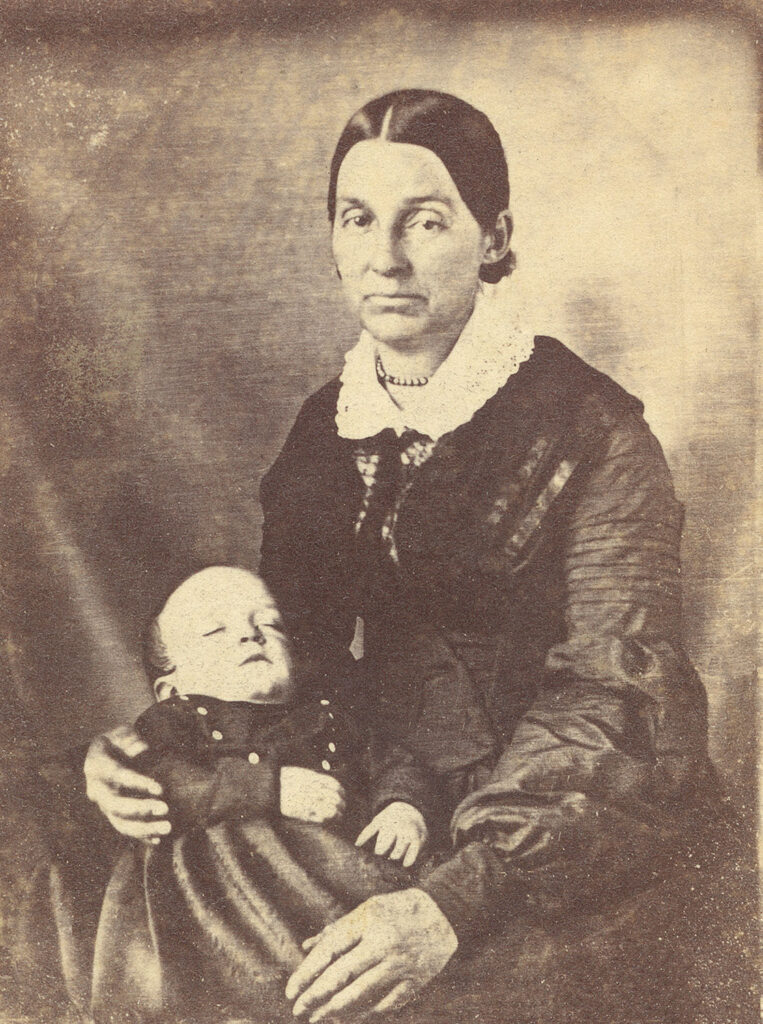
After Young made his comments on March 9, 1845, he did not call a meeting to inform the women, did not speak to them on the matter the following month in general conference (though he did speak directly to women at that time and at other times from the stand), and did not write to the women as he did in other circumstances. His words may have been intended to make clear his opposition to Emma’s leadership to the men present in these meetings. Emma, after all, did not support Young’s leadership and preferred William Marks as the Trustee in Trust of the Church. After Young assumed leadership of the Church as President of the Quorum of the Twelve, Emma no longer participated in the Anointed Quorum, did not perform ordinances in the Nauvoo Temple, and did not go west with the Saints. Young and Emma clashed over many issues, and as historian Benjamin Park suggested, “If Young could not directly attack the widow of Mormonism’s prophet, he could at least attack her institution, the Relief Society.”[5]
If the Relief Society was not meeting but was also not formally disbanded as an ecclesiastical organization, what were women doing in Nauvoo? How did they engage with institutional power? How did they shape the direction of the Church and the succession of Church leadership? There is more work that needs to be done in this area. Women are largely left out of the narratives of the Succession Crisis, which is rhetorical shorthand to discuss the months and years after Joseph’s death and the claims of various men to lead the Church. As historian Robin Jensen has argued, the term “Succession Crisis” has the potential to obscure history and detract from understanding the experience of church members at that time.
I coined the term “Shadow Succession Crisis” to provide a lens to excavate the women from the records and integrate them into the Succession Crisis narratives that have previously almost exclusively focused on the words and actions of men. This lens allows us to more fully analyze women’s use of agency when engaging with institutional power. The Shadow Succession Crisis is more broadly about women’s attempts to navigate paths of ritual and ecclesiastical influence and not about the Relief Society alone. However, Relief Society women who supported Young and the Twelve had to break with Emma as their ecclesiastical leader, even if some women maintained a personal relationship with her. Aspects of the Shadow Succession Crisis can be seen in records of post-martyrdom plural marriages of Joseph and Hyrum’s widows, new female initiations into the Anointed Quorum, women’s leadership in the Nauvoo Temple, and in the case of Eliza R. Snow, publishing poetry in support of Young and taking the records of the Relief Society with her across the plains.
There are consequences to the history of the Church and the Relief Society when scholars accept the claim that Young disbanded the Relief Society. They tend to discuss the work the women did in the proceeding years as “informal,” meant to comfort and support one another, and may miss the opportunity to analyze how the women interacted with and shaped institutional power. When Young’s words to an all-male audience are centered over the records and experiences of women, the role of women in the restoration tradition becomes contingent upon the shifting emotions of the man with the most power. Restoring the actions and words of women to the center of their experience allows for a fuller, more complete, and balanced history.
[1] One of the main sources for my talk on Utah Women’s suffrage was the book Thinking Women: A Timeline of Suffrage in Utah by Katherine Kitterman and Rebekah Ryan Clark.
[2] Brigham Young, Discourse, March 9, 1845 (excerpt); Record of Seventies, Book B, 1844-1848, pp. 7-78. Church History Library (CR 3 51). https://content.ldschurch.org/bc/content/PDF/1-13-Brigham-Young-Discourses-Mar-9-1845-CHL-CR-3-51.pdf (accessed April 22, 2021).
[3] Brigham Young, Discourse, March 9, 1845 (excerpt); High Priests Quorum record, 1844-1845; Church History Library (CR 1000 1), https://catalog.churchofjesuschrist.org/assets?id=3bee6eb3-d491-47ba-873c-f55723c0fe68&crate=0&index=95 (accessed April 22, 2021).
[4] First Fifty Years, Relief Society Minute Book, March 16, 1844, 131.
[5] Park, Kingdom of Nauvoo, 260.


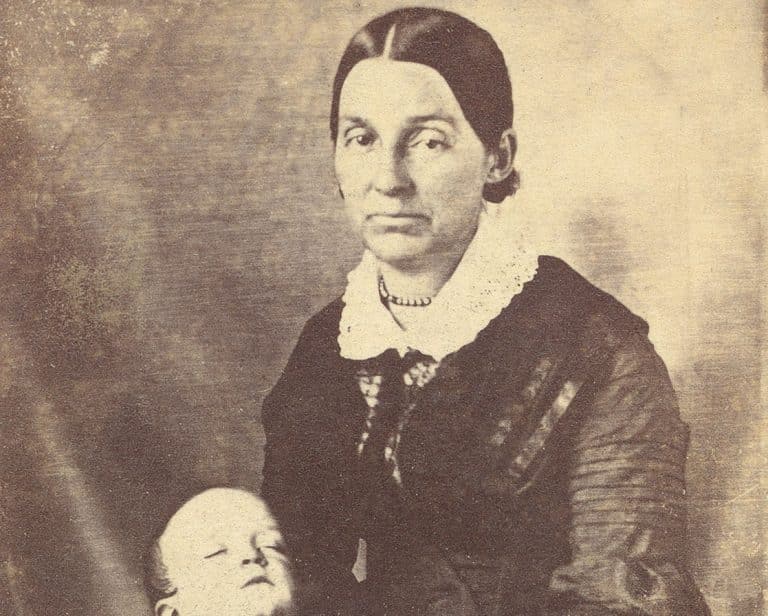



21 Responses
Such a well-written and documented piece, thank you for endeavoring to make women more integrated into our history. I am excited to read more research as it develops. I love this!
Thank you!
Thank you so much. I love learning more about history, even the bits we take for granted. I hope we continue to make available the works of the women coming through those times.
Thank you, Alma!
I’m listening to this podcast now and finding it extremely interesting. I love how historians keep working to get the most accurate representation of the past they can, even if it debunks long held assumptions.
Thank you for both reading and listening to the podcast!
Fascinating! Thank you for developing this research!!! I look forward to a formal article!
Thank you!
Listened to most of the podcast today – fascinating. But I still hate the many condescending things BY said to and about women. Thank goodness we’ve come a long way since then.
I’m with you! I’m not a fan of many of the things BY said about women and other marginalized people!
Thank you! This is fascinating!
Thank you, April!
It makes a lot of sense that BY’s approach to (or lack of) the Relief Society at the time of the martyrdom, as led by Emma, would likely be chaotic and confused distancing rather than an edict from on high to disband. And the work of RS leaders, sans Emma, at Winter Quarters and into the Salt Lake valley lends credibility to them not being “officially” disbanded.
I’m curious to see an analysis by historians and history geeks (in addition to this) of what went down in the early 1850s when the formal organization of the church, along with the RS, was improved. By then, BY’s leadership was established enough to issue such edicts, and whatever actions of support for the RS gave credence to the notion the the RS org was reinstated.
I haven’t listened to the podcast yet, but perhaps this is worth examining.
I think the Shadow Succession Crisis allows for a closer look at how women interacted with and shaped the institutional church during the long transition from Nauvoo Relief Society to Utah Relief Society. I think there’s a lot more work to be done here!
Is it safe to say that there was a separate but related succession crisis as to who would lead the Relief Society going forward?
There is definitely more to the story and I’m grateful you are digging into the research to better understand how Relief Society continued under Eliza R. Snow instead of Emma.
The transition from Emma to Eliza does not follow the same kind of trajectory as from Jospeh to Brigham/Twelve. The succession of the Relief Society wasn’t so explicit and intentional, IMO. The RS stopped functioning as an ecclesiastical organizaiton with regular meetings after March of 1844 due to conflicts over polygamy and the events leading up to and after the martyrdom. But without the RS functioning, there are important ways that women engaged with and shaped the church in both orgnanized/official ways and social/relational ways. The Shadow Succession Crisis looks more broadly at how women engaged with and shaped institutional power and not the Relief Society alone (as not all women were members of the Relief Society), and there is so much more to be done here!
This is really helpful additional context, thanks! I also listened to your Sunstone podcast episode which gives more insight into the chaos of the time. I’m curious if there is anything in Eliza’s journals about the Relief Society minutes and how they came to her and travel to Utah with her.
This was amazing. Thank you for sharing!
Thank you!
Every time I hear new-to-me quotes from Brigham Young, I like him less and less! I understand why Emma didn’t support him. He was the epitome of patriarchy gone wrong with total control being his goal. I know the Lord needed him to get the saints to Utah but it is hard to have real respect for him. I don’t see Jesus in Brigham Young.
King Noah was a type and shadow to Brigham Young. Go to Mosiah and see just how many qualities and similarities they share. The above quote from Brigham says that he is blaming the deaths of JS and HS on the Relief Society. Wow! He is going to summon the women like a king? Gross